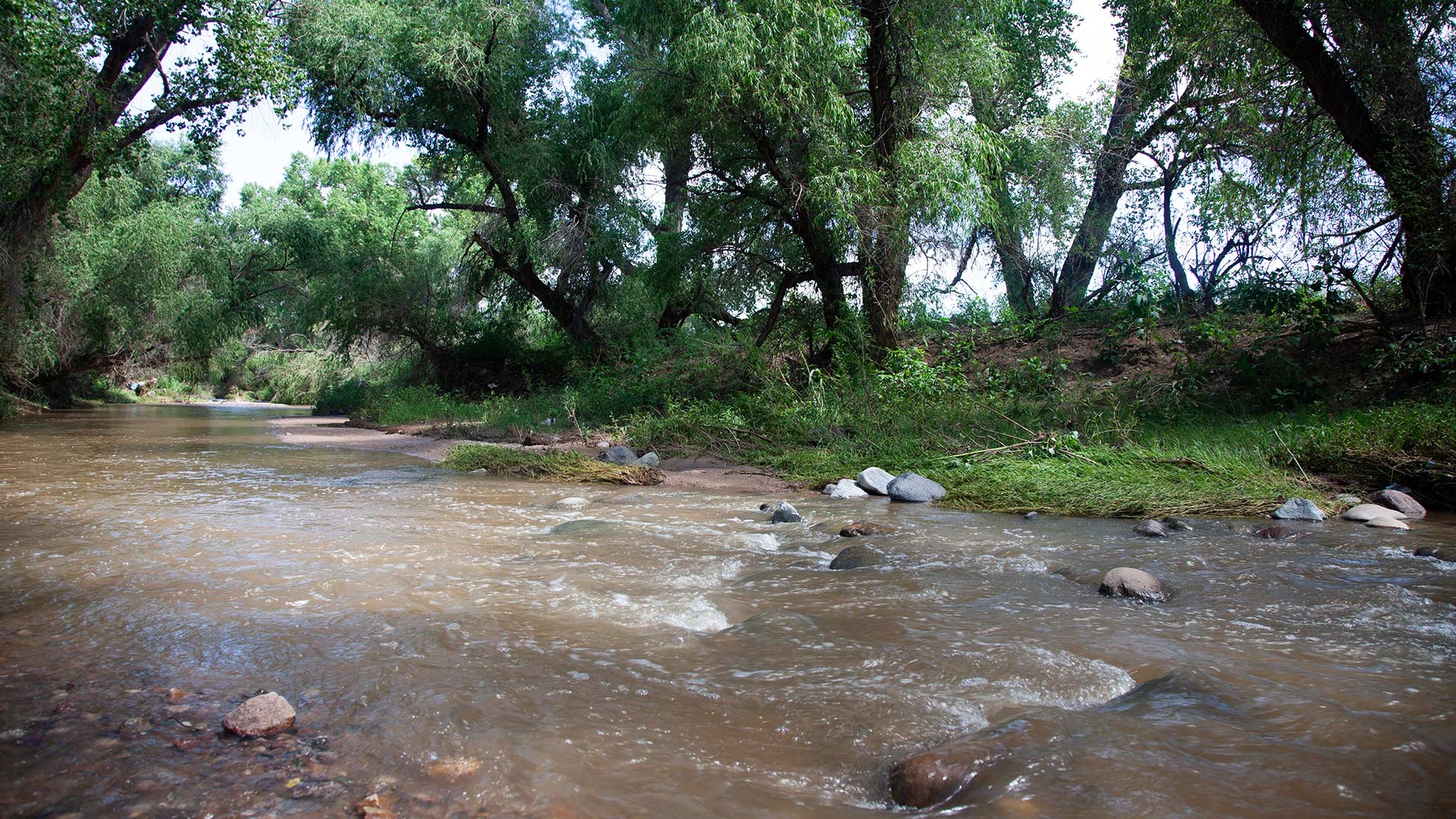 Highly treated wastewater and stormwater flows through the Santa Cruz River off of the Guy Tobin Trailhead in Rio Rico, Ariz., on Thursday, Aug. 1, 2024.
Highly treated wastewater and stormwater flows through the Santa Cruz River off of the Guy Tobin Trailhead in Rio Rico, Ariz., on Thursday, Aug. 1, 2024.
Earlier this year, the Santa Cruz River was named one of America’s most endangered rivers by the environmental advocacy nonprofit, American Rivers.
In response, conservation groups are advocating for the river’s designation as a National Wildlife Refuge, which would extend federal protection to about 7 miles of riparian habitat.
The process which entails comprehensive conservation planning, just made headway after the U.S. Fish and Wildlife Service approved a Landscape Conservation Design (LCD) or footprint that outlines species and habitats in the Southwest Region that call for protection, as well as a proposal for an urban partnership program in Tucson.
According to Service officials, the plan highlights areas of upland Sonoran Desertscrub, canyon environments and riparian habitats that federally listed species like the southwestern willow flycatcher, western yellow-billed cuckoo and Mexican garter snake rely on.
For the area to be included in the National Wildlife Refuge System, the designation must pass through several phases of planning, a process that Nancy Brown, public outreach specialist with the Service describes as a community-driven effort.
“They’re the ones that put this forth to the US Fish and Wildlife Service for consideration and the Service signed off on that, that landscape conservation design essentially saying that we think this has merit,” Brown said.
The Service evaluates how a nominated site aligns with the mission of the National Wildlife Refuge System and assesses how to maintain the biological integrity of the area.
“What are the different potential demographics or socioeconomic needs? There are a lot of factors that need to be considered including the health of that river,” Brown added.
Next week, the Service in collaboration with local partners, will hold two community workshops at Pima Community College’s Desert Vista Campus that will focus on action planning and community-based conservation efforts with the goal of developing a balanced, comprehensive strategy for the river’s long-term protection.

By submitting your comments, you hereby give AZPM the right to post your comments and potentially use them in any other form of media operated by this institution.